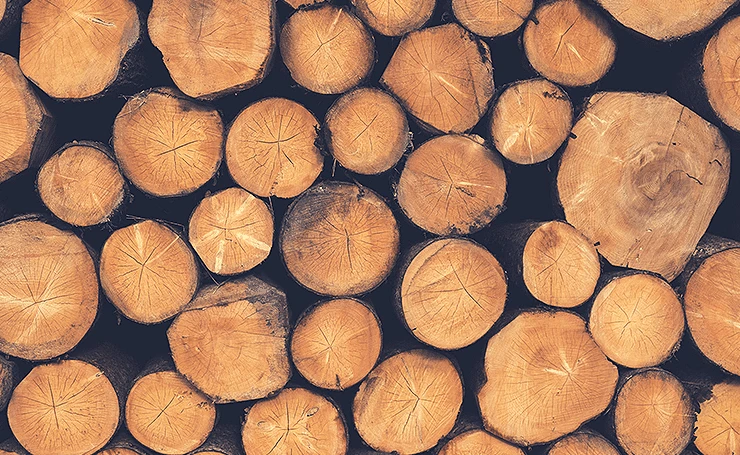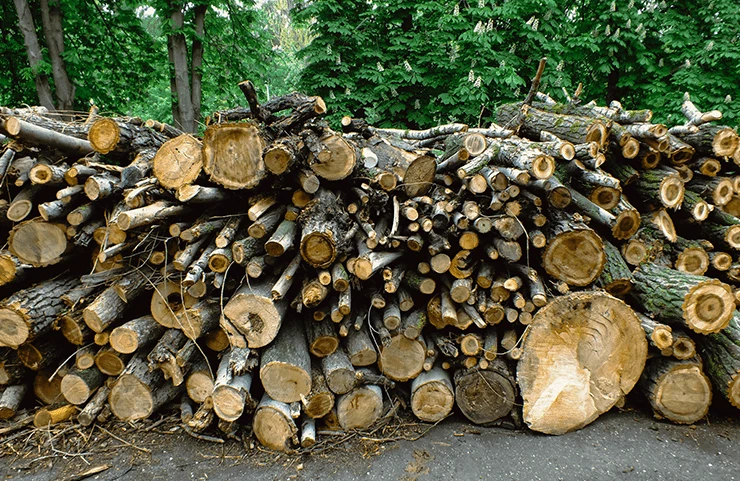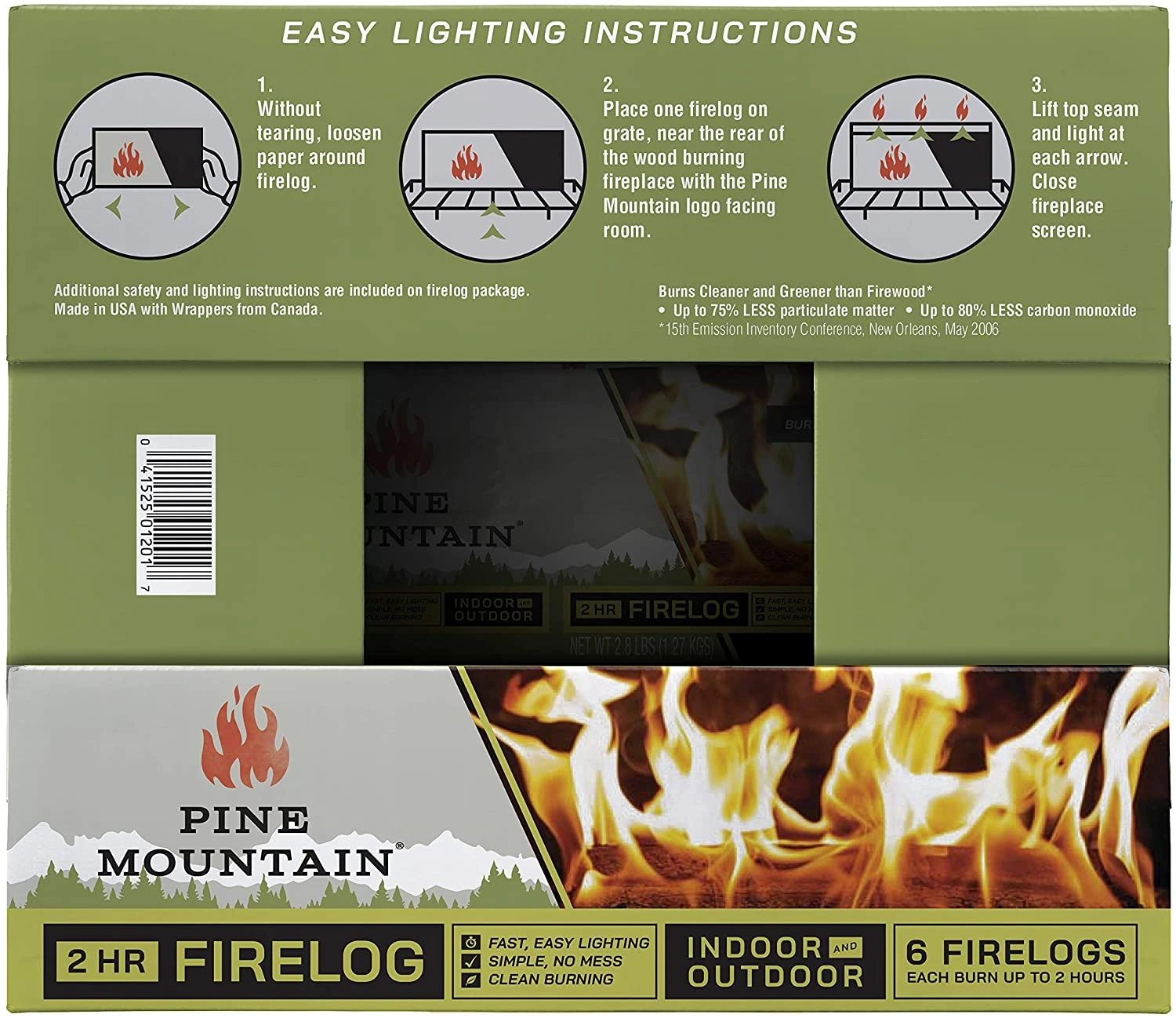Firewood is any wooden material naturally gathered or collected and burnt as fuel. Firewood is renewable and not highly processed, therefore reducing the cost of acquisition.
This article describes the best firewood and shade light on the different types of firewood available in the market. I aim to assist you in making a better decision about the kind of firewood you intend to buy or cut in preparation for the cooler seasons. This information shows precisely why your fire frequently crackles or is not burning as hot as you would like.
What is the Best Firewood?

Firstly, I am providing a quick overview of the best firewood to buy for the minority who are impatient to go through the entire article. I recommend reading through the rest of the article if you intend to learn more about firewood and the different types of trees.
We have an in-depth firewood facts guide if you want to know all the facts about firewood, including how much a cord of wood costs.
A Quick Overview of the Best Firewood to Burn:
Oak:
- Hardwood
- A high amount of heat
- Less smoke and sparks
- A little challenging to work with
- Low moisture content
- Good fragrance
Black or White Ash:
- Hardwood
- Burns easily
- Medium to high heat amount
- Less smoke and sparks
- Easy to work with
Birch:
- Hardwood
- Medium to high heat amount
- No smoke nor sparks
- Burns fairly easily
Beech:
- Hardwood
- Seasoned to produce long, hot fires
- Less smoke and sparks
- Easy to split
Douglas fir:
- Softwood
- Medium heat amount
- Easy to split
- Best for inexperienced fire burners
- Leaves less ash
- Best of the conifers
Madrone:
- Hardwood
- Seasoned to produce long, hot fires
- Clean to burn indoors
- Difficult to split and work with
Hard maple:
- Hardwood
- Easy to burn
- High heat amount
- Difficult to split
- Produce less smoke and sparks
Cherry or Black Cherry:
- Hardwood
- Medium heat amount
- Produce less smoke and sparks
- An excellent choice is aroma is essential
Hardwood is a better choice than softwood firewood due to its high density. As highlighted, the best firewood is White Oak, Ash, Birch, and Beech. In a scenario where there are not many options, then Douglas fir and any of the cedar softwoods would be a good choice.
Hardwood | Firewood

Hardwoods are broad-leaved and naturally come from dicot (Dicotyledon) angiosperm trees. Most angiosperm trees are deciduous; hence, they shed leaves seasonally. Species like oak show annual growth rings and are both present in tropical and temperate regions. Hardwoods have a more complex structure as compared to softwood.
Vessels or pores are present in hardwood – the main feature that separates them from softwood. As the name suggests, Hardwood is more durable, and the level of durability varies from specie to specie. Not only is it used to burn as fuel but also in construction. It is good to make furniture, musical instruments, boats, flooring, and industrial usage like charcoal.
The better quality makes hardwood more expensive as compared to softwood. As much as trees are renewable resources, overexploitation makes species like Burma teak and mahogany scarce. Hardwood is the best available firewood in the market for campfires and indoor use.
Softwood | Firewood
Softwood comes from gymnosperm trees like conifers and cycads. Softwood account for 80% of the world’s timber, most of them found in the Baltic regions (Russia and Scandinavia), China, and North America. Softwood is not necessarily softer than hardwood. Balsa is a hardwood species that is softer than softwood. Even though hardwood is the best for construction, you can use softwood to make beams, poles, and paneling.
Processed Logs

Processed logs (Pine Mountain) are seasoned and cut planks of wood. This can be any kind of firewood gathered, seasoned, dried, and used to manufacture goods. However, the definition of log means that it can represent a section of a trunk in its natural state.
Firelogs are easily the best firewood for fuel production. Their production can be in two methods, either using compressed sawdust or using both sawdust and paraffin (wax derivable from petroleum, coal, or oil shale). They come in paper wrappers and ready to use since paraffin is flammable.
Waste fiber from palm oil fruit branches makes cleaner fire logs. In terms of quality, these fire logs are highly recommended and are available in the market. Sawdust is the most commonly used since it is cheaper to obtain.
The Science of Burning Wood

Burning wood is like art, and the kind of wood, the quantity, its moisture, density, and scent needs to be considered. The low density in softwood makes it unsuitable for burning indoor fires because of how fast you will have to replenish it. Changing the firewood may become cumbersome.
The pitch (resin produced by trees as a defense mechanism from insects/ to heal wounds) does not affect the firewood’s quality as the moisture does. If it is the only option, make sure it has dried out completely.
People in the West take pride in burning large fires in events or just around friends. Remember the following if you are looking to build a large fire. First, smoking is a sign of combustion but not a successful fire. I believe no one has the desire to smoke up a chimney. Second, you will need plenty of air to start a fire. Placing the logs in a crisscross stack promotes aeration. Lastly, close down the stove or grate lid to keep the fire burning.
Seasoning of firewood
The kind of firewood you choose to burn does not matter as long as you are comfortable using it. You do not necessarily need seasoned wood, but seasoned firewood will burn the longest and brightest to give the best results. Hardwoods like oak need at least a year of seasoning to burn cleanly.
Freshly cut wood has a high moisture content of up to 45%. Seasoning reduces this content to between 20-25%. Properly seasoned firewood is white on the inside and easier to cut.
Good seasoning of firewood needs you to cut the tree at least six months or a year before using. The sun and wind should help you get the job done. Depending on your grate size, it is necessary to cut the logs into small 12-18 inch sizes.
Trees have vessels for water and nutrients transportation, and these tubes can stay full of water for years, even after cutting it down. Chopping the log into smaller pieces allows the tubes to dry out quickly. Below are some things to look for in well-seasoned firewood that you intend to buy.
There should be visible darkened ends with cracks or splits in well-seasoned wood. Tapping the wood with a coin or key should feel brittle and give a sharp sound.
A year is enough for softwood species. Seasoning should take well over 1-2 years depending on the climate, and species produces the best firewood. Semi-seasoned firewood is cost-effective and thus ideal if you are running a tight budget. It has a moisture content of 35%, and it should be ready to use in the winter if you buy it in the spring or summer. Store seasoned wood in a shed to prevent it rotting.
Hardwood vs. Softwood (How it burns)
As discussed previously, the kind of wood you use to light a fire does not matter as long as you season it well. Certain qualities in hardwood give it a clear advantage over softwood, making it the best option for firewood.
Hardwood generally burns longer, cleaner, and do not produce lots of ash. Some species of softwood burn hot enough to damage your stove due to high pitch content. Softwood takes less seasoning time and burns as well as hardwood when done correctly.
It narrows down to two things when choosing the best firewood, seasoning, and species. Different species take different times to clear their moisture.
Below is a discussion on different kinds of trees that produce either hardwood or softwood.
Oak (Hardwood)
Oak is available almost everywhere in the world in abundance. If you season it well, it produces the best firewood to burn. Processing takes a long time (approximately two years) for your wood to be properly seasoned. It is the best firewood once the process is a success.
If you did not know already, wine, beer, whiskey, and scotch are aged and stored in barrels made from oak wood in Europe and America. Professional musical instruments are mostly Japanese oak.
Hard Maple (Hardwood)
Maple has over 128 species, mostly located in Asia. Many of these species are merely shrubs, and the rest do not grow to be very tall. Maple trees have opposite leaf patterns, making them distinguishable from other trees.
Maple trees grow flowers in bright colors like red, yellow, and orange, making them good ornamental trees enhance the beauty of homes and offices. England has three maple tree parks, Wakehurst Place Garden, Westonbirt Arboretum, and Windsor Great Park.
The trees are popular in Japan, customarily known as “momijigari, “which refers to the maple trees’ changing colors in autumn. For commercial purposes, it produces maple syrup (goes with pancakes!) and wood.
Tennessee Whiskey comes from maple syrup charcoal. Some species of maple-like the sugar maple in North America, make good timber. Music instruments and bowling equipment are hard maple wood. It is the best firewood for an ‘old fashioned’ bonfire.
Birch (Hardwood)
Birch is a broad-leaved deciduous hardwood tree that closely relates to the oak family. Found mostly in temperate and boreal climates, they are short-lived species. Birch has a satin like sheen, and most people find it very exquisite. Its wood is used in making timber for veneer (thin wood slices glued together to make things like doors) and furniture. Soaps, shampoos are cosmetics that come from birch extracts. Birch buds and barks have medicinal value and are therefore are popular in the pharmaceutical industry. Wooden pulp extracts make paper.
Research shows that the birch tree has spiritual importance in many religions, both modern and historic. It is a symbol of growth, renewal, and stability in Celtic cultures and has a somewhat softer structure that burns quicker than the other two hardwoods.
Pine (Softwood)
Pine tree belongs to the Pinaceae family and is a personal favorite. They emanate from cold areas, but some species grow in a temperate and tropical climate for timber and industrial use. Pines are evergreen, live long, and grow quite tall between 15-45 meters.
Some pine species have thin barks, while most of them have thick, scaly barks. Pine has four different kinds of leaves: seed, juvenile, scale, and needle (conical in shape). It is one of the most commercially used trees for wood pulp, turpentine, and timber to make furniture, flooring, and household carpentry.
Personally, pines remind me of the mountains, wooden cabins, and Christmas.
The tree is suitable for homes, too, since it does not decay or attract insects quickly. Pine nuts are food in northern areas (tea comes from pine trees). It usually has a lot of moisture, therefore produces much smoke, and makes it inappropriate for burning indoors.
Fir (Softwood)
Fir is of the same family as pine. They are evergreen and found in the mountains, having around 56 species. Fir grows tall to a height of about 10-80 meters, and they have needle-like leaves with erect, cylindrical cones.
Leaves attached to the bark resemble a small suction cup. Rough timber and plywood is made from fir pulp but is recommended for domestic carpentry for the same reason as pines. They are famous Christmas trees as well.
Fir easily splits and produces less smoke and therefore makes good firewood. Proper seasoning and drying are necessary before burning. It is one of the best firewood available list.
It is essential to understand the different kinds of trees and wood for you to choose firewood based on your requirements. I hope that I helped you through the decision process.
You can learn more about firewood by reading: How much is a cord of wood? – and other firewood facts.



